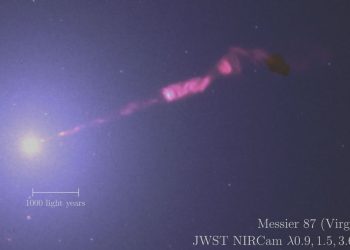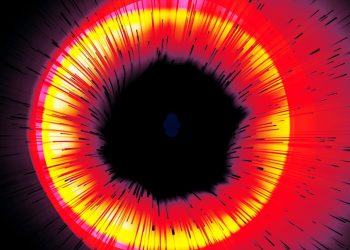Dark matter, one of the universe’s best-kept secrets, may have quietly painted the cosmos in faint, detectable hues of red and blue, a new study suggests.
Dark matter represents more than 80% of the matter in the universe, but it does not emit, absorb or reflect light, making it impossible to observe directly. Now, a new theoretical study by scientists at the University of York in the United Kingdom suggests that light passing through regions of space rich in dark matter could take on a slight hue – slightly red or blue, depending on the type of dark matter it encounters.
The effect would be extraordinarily subtle, far too faint to be detected by current telescopes, but potentially measurable with the next generation of ultra-sensitive observatories, the researchers say.
“This is a fairly unusual question to ask in the scientific world, as most researchers would agree that dark matter is dark,” study co-author Mikhail Bashkanov from the University of York said in a statement. “But we showed that even dark matter, which is the darkest form imaginable, could still have some sort of colored signature.”
The team compares this concept to the “rule of six handshakes,” the 20th-century theory that two people on Earth are connected by a chain of up to six acquaintances. Likewise, the study suggests that even if dark matter does not interact directly with light, it could do so indirectly through intermediate particles that both parties “know,” including light. Higgs bosonthe so-called “God particle” which represents the Higgs field, responsible for giving other particles their mass.
This indirect link could allow photons, the particles of light, to scatter ever so slightly over dark matter particles, leaving behind a murmur of color or a “fingerprint” of polarization in the light, the study suggests.
“It’s a fascinating idea, and what’s even more exciting is that, under certain conditions, this ‘color’ might actually be detectable,” Bashkanov said in the release. “With the right kind of next-generation telescopes, we could measure it.”
In their study, published Earlier this month, writing in the journal Physics Letters B, Bashkanov and his team performed what they say are the first detailed calculations of how strongly light might scatter on dark matter.
The results suggest that if dark matter consists of weakly interacting massive particles, or WIMPs, that interact via the weak nuclear force, then light passing through a WIMP-rich region would first lose some of its high-energy blue photons, leaving the transmitted light slightly tinted red. In contrast, if dark matter interacted solely through gravity, the photons would scatter in the opposite direction, giving the light a slight blue shift, the study notes.
In both situations, the interactions are tiny but not zero, the researchers say, meaning that dark matter could leave a detectable “footprint” on light passing through dense regions of it, such as galaxy centers or galaxy clusters.
Their calculations show that these effects could slightly distort the light spectrum of distant objects. The glow of a galaxy, for example, can appear microscopically redder or bluer depending on the dominant type of dark matter between it and Earth. In principle, such differences could help scientists distinguish patterns of dark matter depending on whether cosmic light is biased red or blue as it travels through dark matter-rich space.
“Right now, scientists are spending billions to build different experiments, some to find WIMPs, others to search for axions or dark photons,” Bashkanov said in the same statement. “Our results show that we can determine where and how we should look in the sky, which could potentially save time and help focus these efforts.”
Detecting these tiny changes would require ultra-precise telescopes and careful analysis of light that has traveled billions of light years across the cosmos. Future observatories with exceptional spectral and polarization sensitivity, such as Europe’s Extremely Large Telescope and NASA’s Nancy Grace Roman Space Telescope, may one day test these predictions.
If confirmed, these findings would open a whole new window of observation on dark matter, bringing scientists closer to solving one of cosmology’s greatest mysteries.









